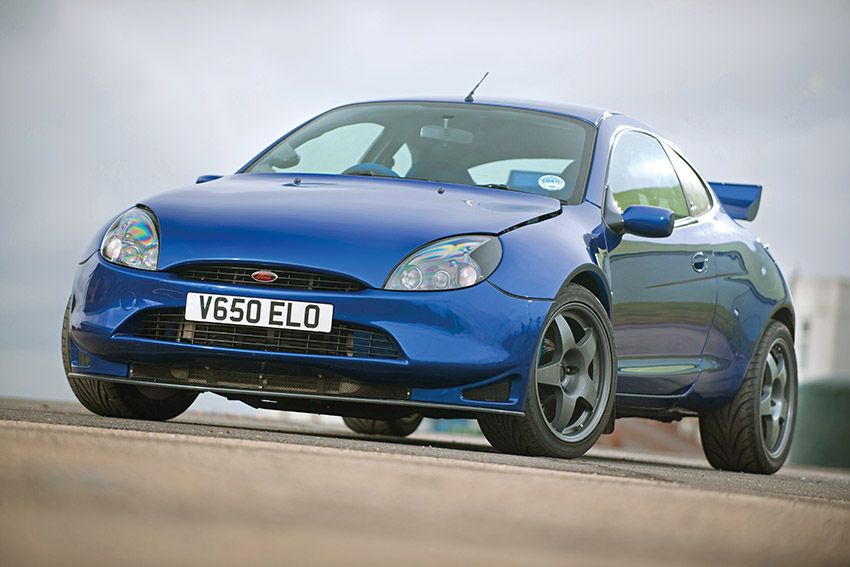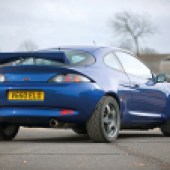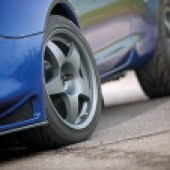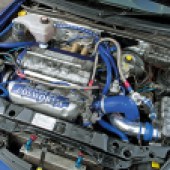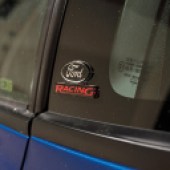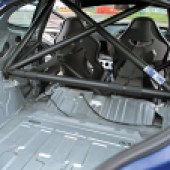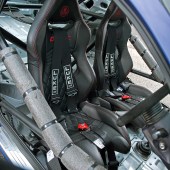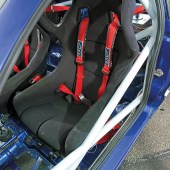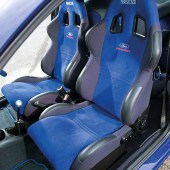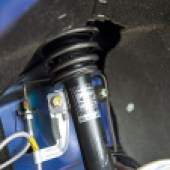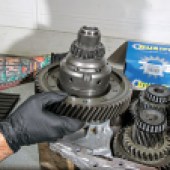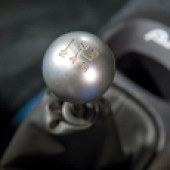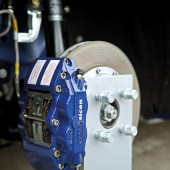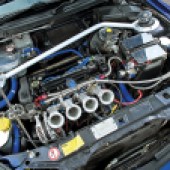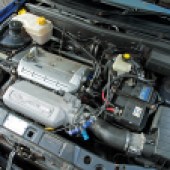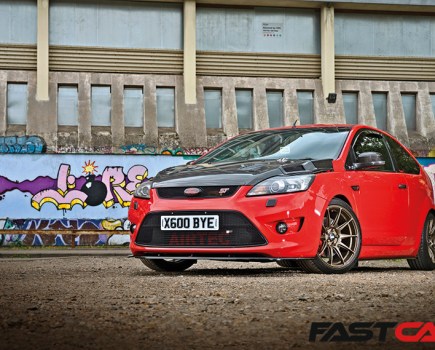The Racing Puma is a classic fast Ford in waiting, but that doesn’t mean you shouldn’t take it down the tuning path with some well-placed tweaks to really exploit the fun-factor.
Guide from Fast Ford magazine. Words: Jamie King & Dan Williamson. Photos: Fast Ford archive.
The Ford Racing Puma (the FRP as it became known) is a dead cert for classic fast Ford status; hand-built by Tickford in limited-numbers, fabulous to look at, and bursting at the seems with unique performance parts, it followed very closely in the footsteps of homologation specials like the mighty Sierra RS500 Cosworth.
Yet, poor sales at the time – no doubt hampered by Ford’s decision to call it the Racing Puma rather than Puma RS – meant just 483 FRPs were sold, and today it’s estimated that only around 280 survive.
But despite the rarity and rapidly rising values, the FRP is a car that can still be used and enjoyed. And some well-placed upgrades – plus a tweak or two in the right places – will make the whole experience even more enjoyable without spoiling anything else.
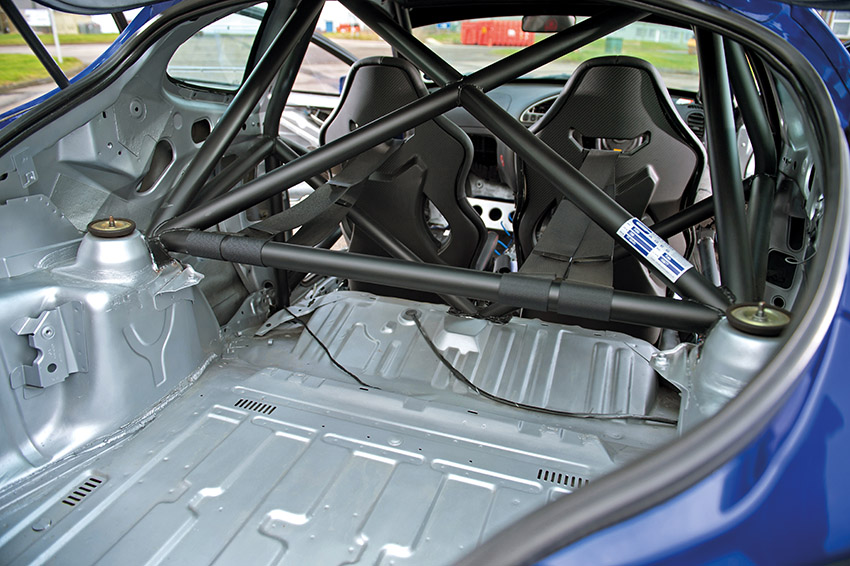
The FRP offers a fantastic base, and Ford has already done most of the work for you; the FRP was based on a concept of Ford’s Boreham competition department to design the ultimate road-going Puma. The resulting ST160 was styled like the F2 Puma Kit Car, complete with wider track and rev-hungry 1.7-litre Zetec SE. The bodywork was beefed up with bulky aluminium front wings and steel rear flares, along with bigger bumpers and Imperial Blue paintwork. The cabin gained blue alcantara Sparco seats with matching door cards and steering wheel, while the engine and mechanical components were subjected to a scheme of modifications to extract maximum performance.
Alcon four-pot callipers, Eibach springs, Mim 17in alloys and uprated driveshafts increased driver appeal, and a limited-slip diff was on the options list. High-performance cams, exhaust and inlet manifold meant grin-inducing fun, but on paper the 152bhp and 126mph top speed simply wasn’t enough.
And that really sums up the FRP: fantastic chassis but notably underpowered. Thankfully, there are ways to remedy that, as well as make subtle improvements to all other areas. Here’s our Ford Racing Puma tuning guide.
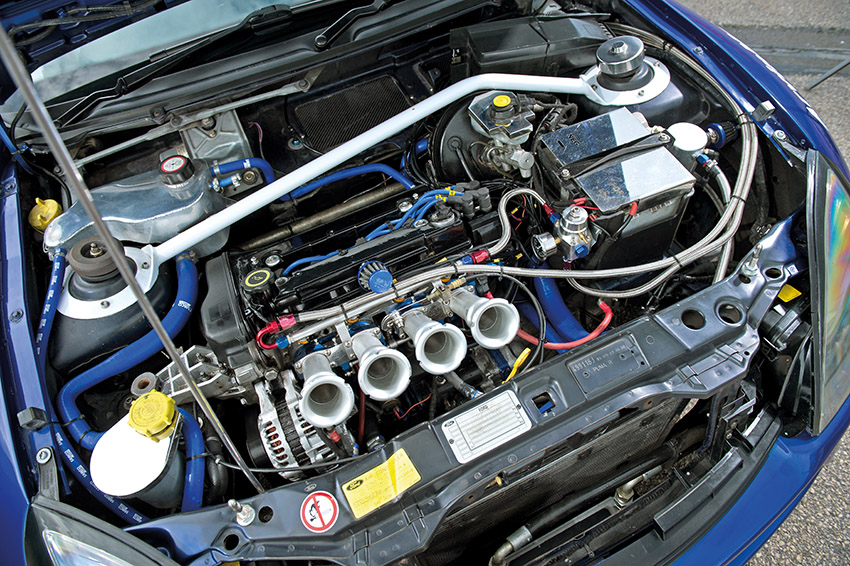
Ford Racing Puma Engine Tuning
The good news is that Ford laid a lot of the foundations for future power hikes, fitting the 1697cc Zetec SE engine with high-lift cams, funky inlet manifold, remapped ECU, revised airbox and full sports exhaust. But the factory 152bhp simply isn’t enough to exploit the fantastic chassis underneath; the FRP needs at least another 10-to-20bhp to come alive.
You could go down the rip-it-out-and-replace-it route, choosing to bin the buzzy 1.7-litre with something bigger and brawnier. But that will totally devalue any genuine FRP, so it’s best left to replicas or regular Pumas retrospectively kitted out with FRP goodies.
Most genuine FRP owners these days won’t want to alter the under-bonnet appearance too much if they can help it, therefore a sensible starting place is to drop a K&N panel filter into the factory FRP airbox for less than £60.
Owners looking for a more audible experience could opt for an induction kit like the K&N 57i (£140) to add some meaty induction roar, and just keep the removed OEM parts in the garage ready to refit before sale time.
On the other side of the engine, the factory FRP exhaust is good, but it’s made from mild steel and therefore prone to rusting. Replacement mild-steel systems are available from specialists like Allison Automotive for those looking to keep things original, but all but the die-hard purists appreciate the longer life offered by a stainless steel replacement, plus they tend to give a deeper and more aggressive soundtrack. Allison offers stainless versions of the same FRP replacement system, and even do a highly polished version for concours cars that like to show off their underbellies at events. The whole lot including 4-2-1 manifold will cost about a grand, but being stainless does offer a fit-and-forget upgrade that won’t adversely affect the resale value.
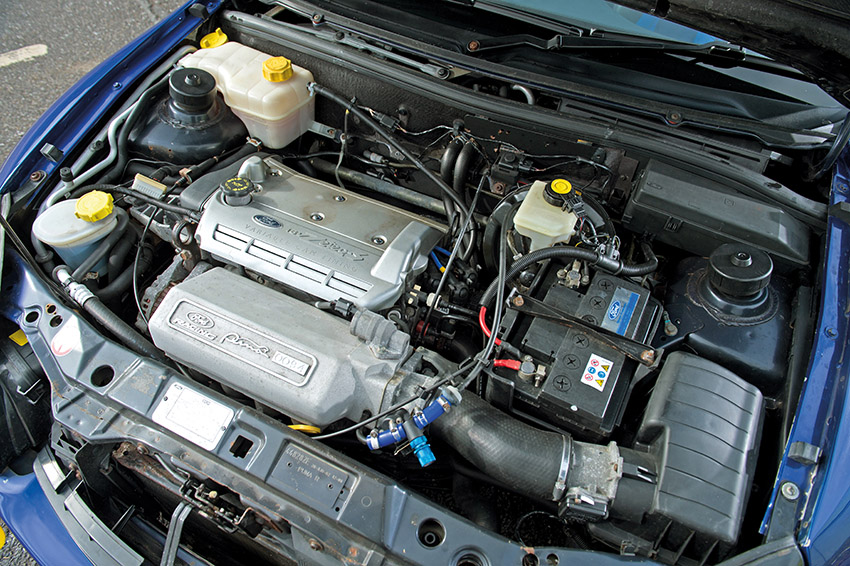
Porting and gas-flowing the cylinder head yields good results; it may be pricey at around £600 plus the aggravation of removing and refitting, but coupled with the exhaust and air filter upgrades you can expect to see around 160-to-165bhp, especially if you delete the air con to free up some of the parasitic losses. The FRP starts to really wake up at this level, and retains a factory appearance to keep the purists happy too.
Further gains will mean making significant changes in the engine bay; replacing the intake with a set of individual throttle bodies will maximise the high-lift cams and exhaust upgrades, and you can expect to see around 180-to-185bhp, but will cost well into four figures by the time you add aftermarket management, fuel system upgrades and mapping to the costs.
A slightly left-field alternative is to add nitrous oxide. This has been done to good effect to offer a full-throttle performance boost when you need it, but without adversely affecting anything else when you don’t. A well set-up system can boost power to around 190-to-200bhp.
Low-boost forced induction conversions are possible with enough cash and patience – and we’ve seen turbo’d FRP engines produce over 300bhp – but again would devalue any genuine FRP, so are usually seen on replicas.
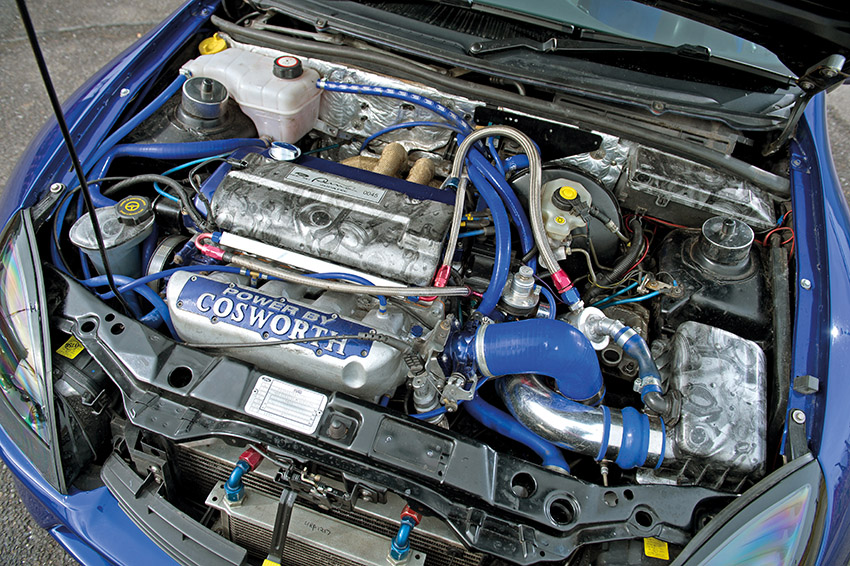
Engine swaps
A genuine Ford Racing Puma would see its value decimated with the wrong engine fitted, so engine swaps will only really be a consideration for replicas.
The good news, though, is there are a number of options to choose from, should you consider this route. Based on the Mk5 Fiesta platform, the same engine swaps are possible; for example, the Mk6 Fiesta ST’s 2.0-litre Duratec is a tried-and-tested swap that gives you a more tuneable platform to build from.
But modern Fiesta swaps see the later 1.6-litre EcoBoost from the Mk7 ST retro-fitted into the Mk5 platform, which would also be possible for the Puma. The biggest expense here tends to be an aftermarket ECU capable of running the direct-injection systems, but with the EcoBoost in place, simple bolt-on upgrades will double the factory power output of an FRP.
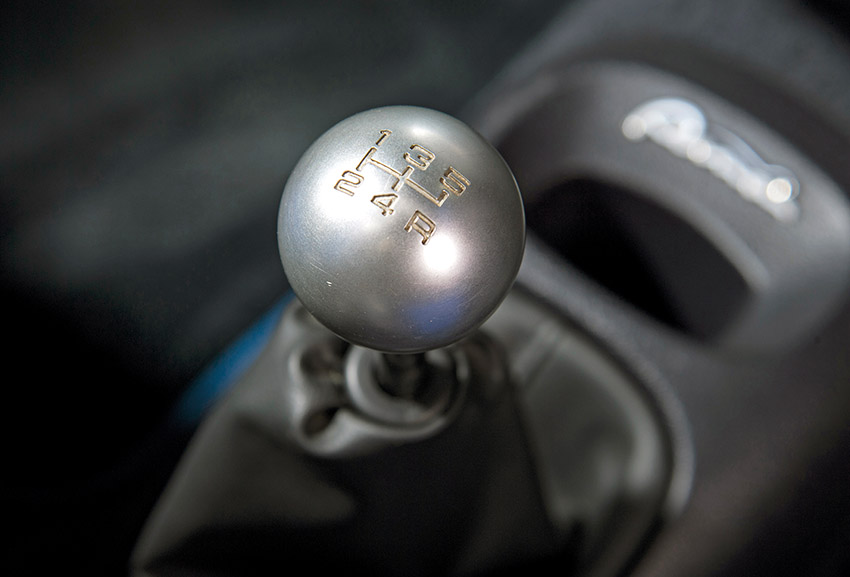
Ford Racing Puma transmission tuning
The FRP’s IB5 gearbox is more than up to the job in most cases; the shot-peened first and second gears plus the sportier ratios means we’ve seen the FRP ‘box sit quite comfortably alongside a 300bhp turbo’d motor.
The ‘box is strong enough to take plenty of extra power, but driveshafts are known to snap, especially when accelerating hard on lock. They are unique to the FRP and pricey to repair. A limited-slip differential can help to smooth power delivery, and 75 buyers ticked the options box that saw their cars equipped with a viscous-style LSD from the factory. If yours isn’t one of the lucky few, then consider adding a genuine FRP item (if you can find one) or a torque-biasing unit like Quaife’s ATB, which also further sharpens the driving experience.
A Fiesta ST clutch will cope with power increases and hard driving better than the original too.
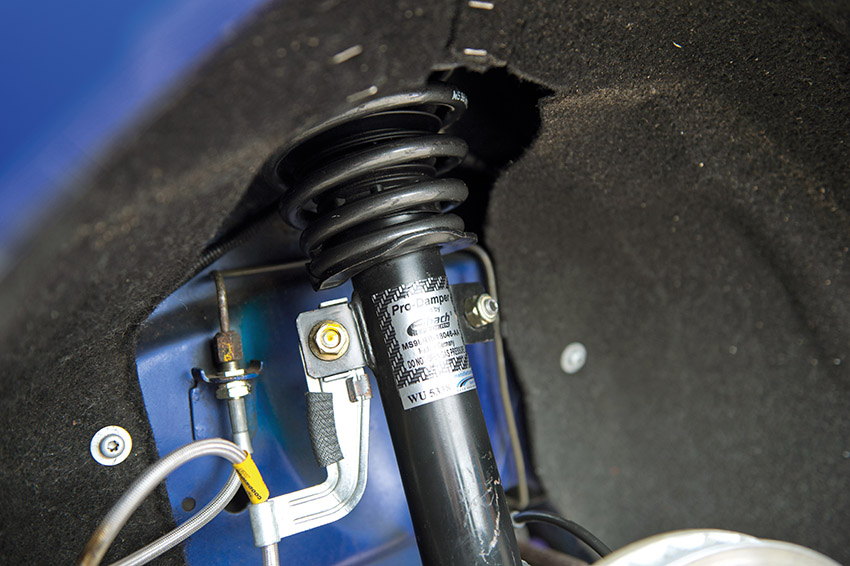
Ford Racing Puma suspension tuning
The FRP is famed for its handling; it’s so good that it highlights the lack of power under the bonnet… But nobody says that about a Mk6 Fiesta (also revered for its handling prowess) with the same 150bhp.
One area definitely worth addressing is replacing the bushes; the stock rubber components are probably worn by now anyway, and polyurethane upgrades bring further tautness and sharpness to the FRP’s chassis, and also offer a fit-and-forget solution.
The biggest criticism with the stock FRP is the almost comically-high ride height. But don’t be tempted to bolt on a set of coilovers and wind things down for a better ‘stance’, as you’ll just ruin the sublime handling and kill all of the character of the car.
That said, a quality set of coilovers like Gaz’s Gold units set to around 25mm lower than stock will give a meaner appearance that looks more like the original ST160 prototype. And because the FRP is renowned for its track pedigree, the type of owner the car attracts won’t be as offended by a good set of coilovers as with other collectable Fords where originality is the be-all and end-all – just keep the originals in the loft to refit if required.
Coilovers are good, but FRP owners really go weak at the knees for a set of RPJ dampers. These were available as a special-order option, and get their name from Richard Parry-Jones (Ford’s chief technical officer and head of global R&D operations, excellent engineer, and pretty handy driver to boot) who stated he preferred an even harder and stiffer ride to further improve handling. Enthusiasts consider these to be the ultimate upgrade for the FRP. Only 15 to 20 sets were ever made, and most have found their way into the hands of enthusiastic owners by now – but if you can find a set, fit them.
It’s also handy to know that the press launch cars had 10mm wider rear wheel spacers than production machines, and adding them on now gives a more aggressive look and wider footprint for even better stability.
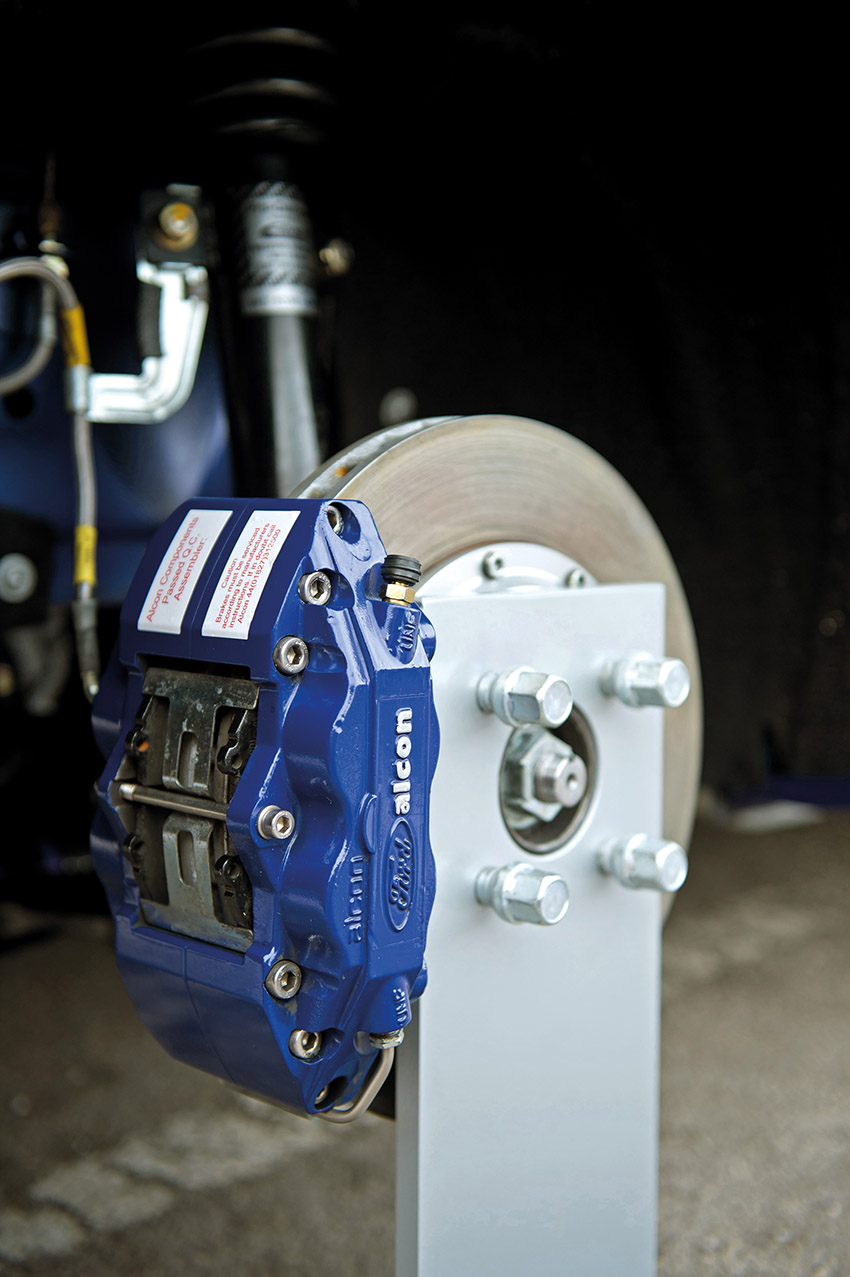
Ford Racing Puma brake tuning
FRP front brakes are really pretty special – 295mm ventilated front discs, Alcon four-pot callipers and Mintex 1144 pads. Needless to say, they work wonderfully. When they work.
The problem is that the Alcons are race callipers, lacking the dust seals necessary for continual road use in all weathers. Therefore, many owners remove the original Alcons and keep them in storage, and opt to fit another set of brakes for regular use or have a second set of Alcon callipers to use while the other set are being refurbished.
Refurbishing the original Alcons can cost more than £700, so it can be a great time to upgrade to something bigger and more powerful. Tarox produces a 330mm big brake kit that uses an eight-pot calliper and will still fit under a 17in rim. At £2300 it’s not cheap but will improve the stopping power and save those precious Alcons from getting damaged.
At the back, the FRP’s Focus rear disc setup is more than up to the task; a decent set of fast road pads is all it really needs.
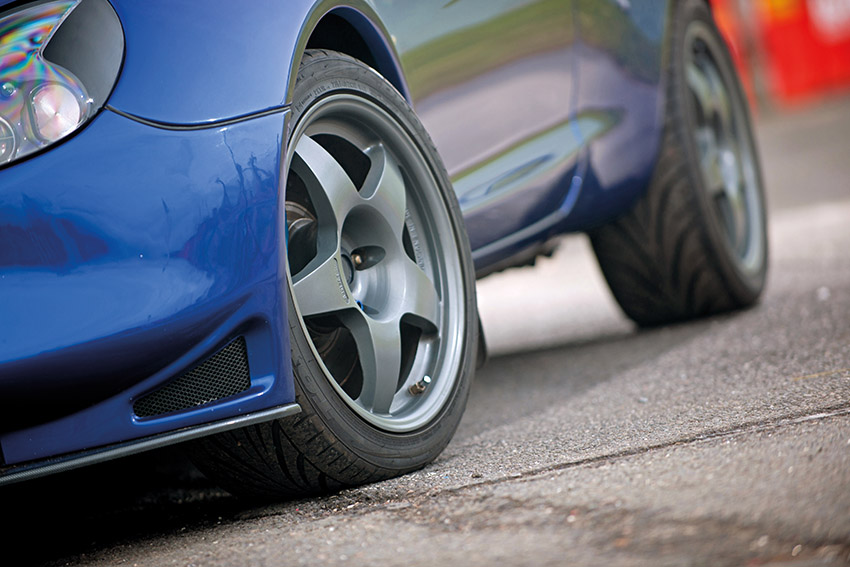
Ford Racing Puma wheels & tyres upgrades
Ford’s PR material for the FRP stated the 7.5x17in multi-spoke alloys were made by Speedline, but they were actually produced by Mim. To ensure they filled the arches and to clear the larger brakes, the stock alloys had a relatively low offset of ET28. Thankfully, that means there are plenty of options to choose from, and if required, adding a spacer will help correct any offset issues.
As for sizes, 17s are generally considered the best option. For a bit of added grip, you can increase to 8in wide and a 235-section tyre (originals were 215s). Larger 18s will physically fit, but are detrimental to handling performance, so stick to 17s. If you do swap wheels, you’ll also need new nuts; the stock Mim alloys have an odd taper that requires a unique wheelnut to be used.
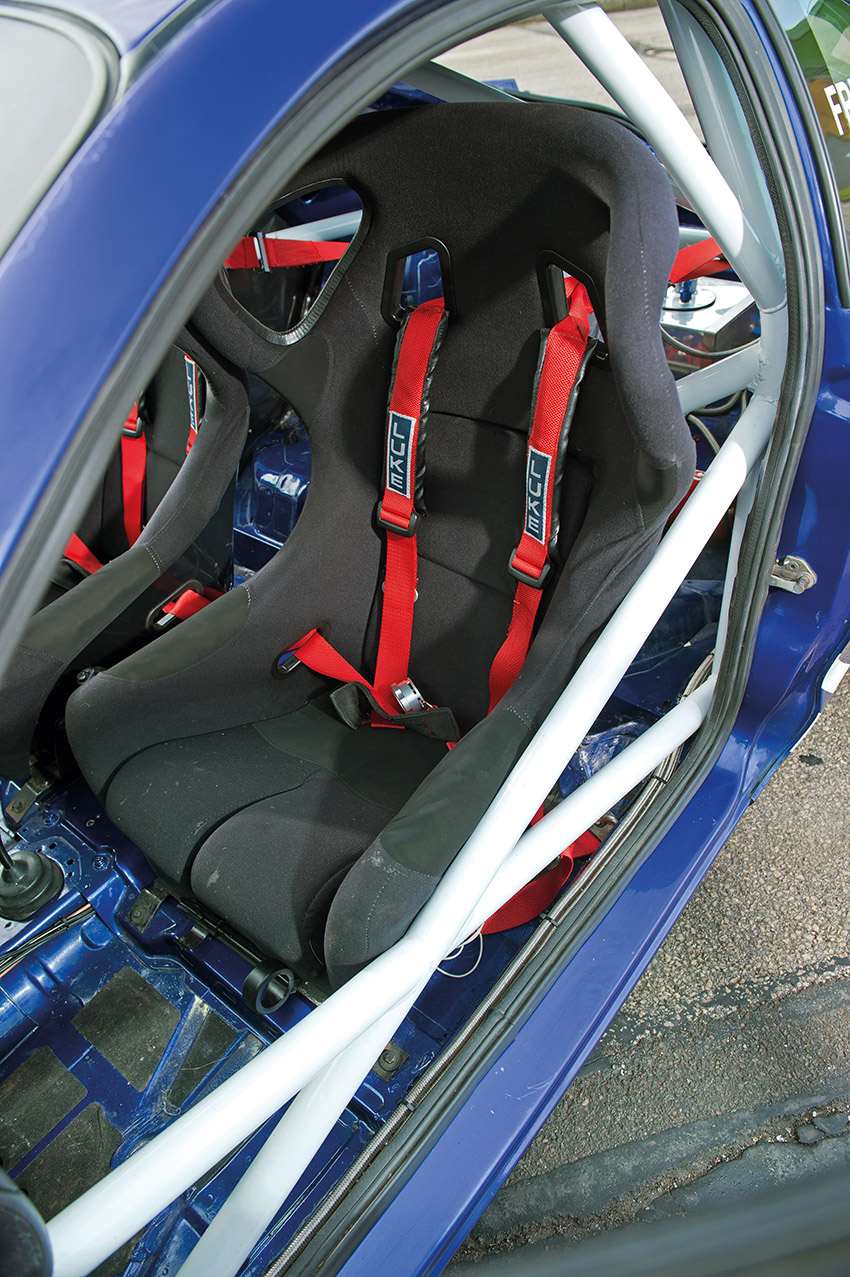
Interior upgrades
The FRP was about as posh as a Puma got. Like most sporty Fords, it’s largely regular-model stuff with an added sprinkling of special bits. The most special of which are the Sparco front seats, which are rare and incredibly sought-after. They are perfect for the fast-road use the FRP was built for, but if track days are your thing a pair of fixed-back buckets and a roll cage might be a better bet. Again, just keep the original bits in your loft and you can’t lose.
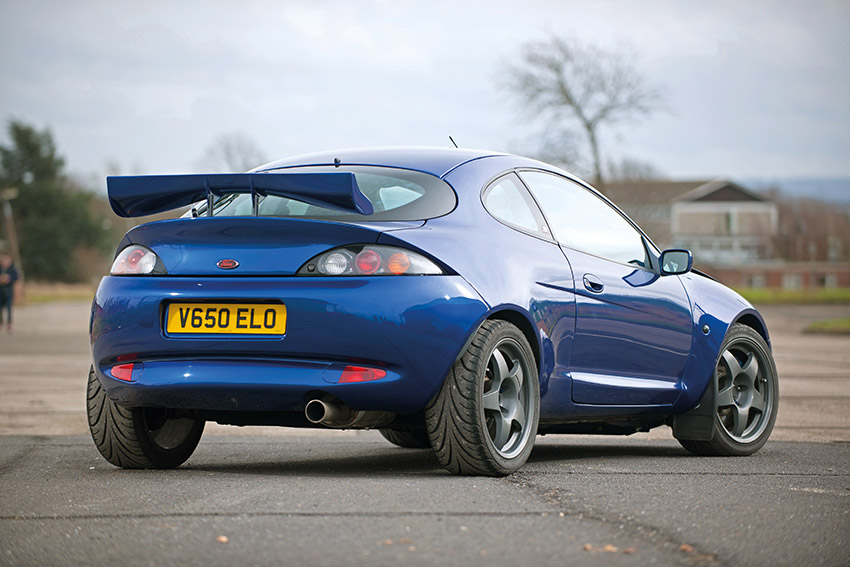
Ford Racing Puma styling upgrades
Ford’s Racing Puma needs nothing in this department; it already comes with a rally-inspired wide track and huge arches, and all were finished in Ford’s signature Imperial Blue. Some owners like to add the F2-style rear spoiler or a carbon bonnet for a more racy look, while many others leave the looks well alone. It’s personal preference.

